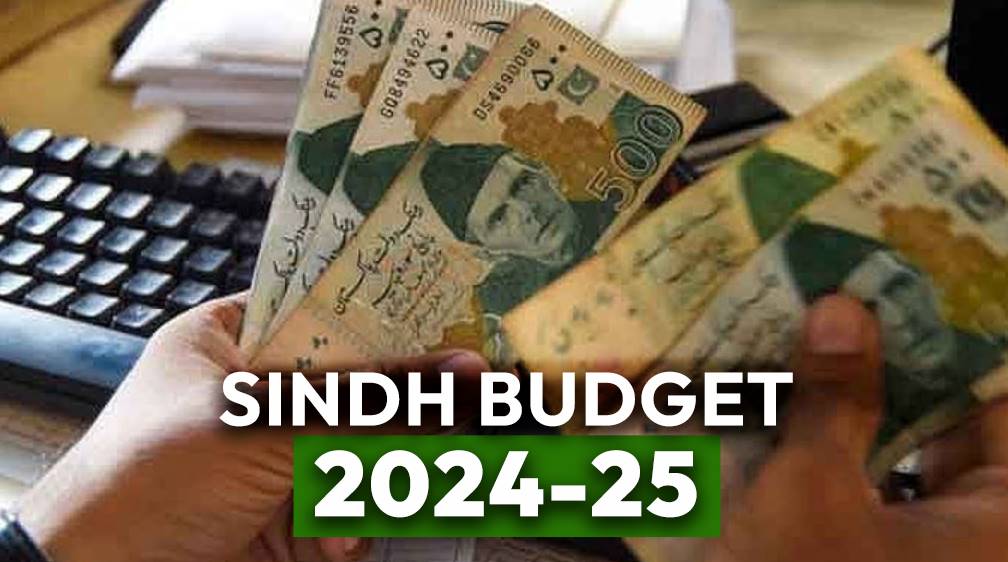Once again racist PPP government in Sindh approved a Rs3.056 trillion budget for the next fiscal year, proposing a salary hike of up to 30 per cent for provincial government employees and allocating around a third of the total outlay, or Rs959 billion, for development expenses. To note, Karachi will contribute at least 95% of Sindh Budget while despite of being 40 % of Sindh’s population. Karachi will continue to receive only 9% of the Annual Development Plan as usual. Ironically, nearly 100% of provincial government employees are from the interior of Sindh, not from Karachi. In short, since the 18th Amendment was passed in 2010, Karachi has become subservient to Sindh, which in practical terms has become the Sindhudesh envisioned by G.M. Syed in 1948.
According to Younus Dagha and Dawn former bureaucrat and caretaker minister currently Chairman of the Policy Research and Advisory Council (PRAC), “In the 2024-25 budget, Karachi is expected to contribute around 60pc (Rs7.78tr) of the targeted Rs12.97tr in tax revenues. Sindh will receive Rs1.98tr (75pc of its budget) in federal transfers and grants, with another 13pc (Rs350bn) from the Sales Tax on Services, mostly collected in Karachi.“The city also generates significant revenue from the infrastructure development cess (Rs170bn) and other taxes. Despite this, only 5pc (Rs160bn) of Sindh’s budget is allocated to local bodies, with Karachi Metropolitan Corporation (KMC) receiving just Rs34bn (1.1 % of Sindh’s budget). In contrast, transfers to local governments in Khyber Pakhtunkhwa and Punjab are 17.7 % and 15 %, respectively. 
World Bank and the Inter-American Development Bank, in 2018 published a detailed Karachi City Diagnostic (KCD) report “Transforming Karachi into a Livable and Competitive Megacity: A City Diagnostic and Transformation Strategy”.
According to exact words mentioned in the report three Pathways were suggested. The first part of this report provides a diagnosis of Karachi’s issues, structured around three pathways focused on key aspects of city management.
1. City growth and prosperity, in which the report analyzes the city’s economy, competitiveness and business environment, and poverty trends
2. City livability, in which the report assesses the city’s urban planning; city man- agement, governance and institutional capacity, and municipal service delivery, focusing on three sectors—(i) public transport, (ii) water and sanitation, and (iii) municipal solid waste
3. City sustainability and inclusiveness, in which the report examines the city’s long-term risks and resilience, looking at (i) fiscal management, (ii) environ- mental sustainability and the city’s ability to deal with disasters and climate change, and (iii) social inclusion.
It is extremely unfortunate that in 2010, MQM, the sole representative of Karachi, supported the PPP in the creation of an all-purpose Sindhudesh by unanimously approving the 18th Constitutional Amendment. As a result of this amendment, the federal government became too weak to intervene in provincial affairs. Meanwhile, Karachi, along with all exchanged lands of MatrukaSindh, ended up under the control of the PPP and the Sindh bureaucracy. MQM, which was originally established to end the discriminatory quota system against the youth of Karachi, ended up contributing to the subjugation of its own people under Sindhudesh. MQM had an excellent chance to address the problems of Karachi by avoiding any provincial autonomy without devolving powers to cities and towns. However, MQM mysteriously did not insist on this crucial issue at the time. Since 2010, the PPP has ruled Sindh without interruption. The PML-N, PTI, and various coalitions of PPP, PML-N, and MQM have all had their chance in the federal government, with all civilian administrations coming to power with the support of the Pakistani military establishment. However, no serious attempt has ever been made to rein in the hateful and racist PPP regime.
Political parties representing Karachi such as Jamat e Islami & MQMPK protested several times and Supreme Court of Pakistan issued clear orders, Neither Sindh government ever changed its attitude towards Karachi nor Pakistan’s establishment felt it necessary to fix the issue. As Afshan Subohi of Dawn News wrote ” More importantly, can a self-propelled, rudderless Karachi continue to support Pakistan’s economy despite being wronged in every way? Possibly. But is it wise to test the resilience of a city so large, divided and yet crucial to the country’s future? The federal and Sindh governments, for some reason, seem willing to take this dangerous gamble.” Majyd Aziz, former Karachi Chambers of Commerce and Industry president, attributed Karachi’s neglect to a lack of ownership by major national political parties and others, including the business associations, but emphasized that the government bears the ultimate responsibility.Mr Aziz criticised the meagre allocations, likening Karachi to a golden goose. “The federal government expects the golden egg in the morning while the Sindh government demands another golden egg at night.”
Since 2016, the establishment has worked to weaken MQM’s exiled leadership, yet Karachi’s issues remain unaddressed. What’s wrong with those in power? They’ve given MQM-PK electoral representation in Karachi but no real authority. Now, with rumors of a constitutional amendment, what could it mean for Karachi? Will there be any effort to address Sindhi racism? Why isn’t there an examination of the discrimination against the Muhajir community in Sindh? Why not create a province for Muhajirs on their land, Matruka Sindh? Ending Karachi’s subjugation could allow it to thrive.

1 thought on “Karachi the slave-city in Pakistan”
ایسا ہی ہے قوم بلکل بے حس ہوچکی ہے
Comments are closed.